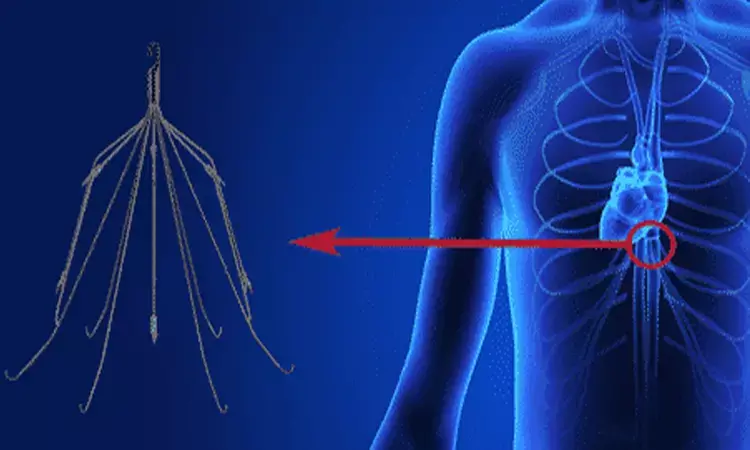- Home
- Medical news & Guidelines
- Anesthesiology
- Cardiology and CTVS
- Critical Care
- Dentistry
- Dermatology
- Diabetes and Endocrinology
- ENT
- Gastroenterology
- Medicine
- Nephrology
- Neurology
- Obstretics-Gynaecology
- Oncology
- Ophthalmology
- Orthopaedics
- Pediatrics-Neonatology
- Psychiatry
- Pulmonology
- Radiology
- Surgery
- Urology
- Laboratory Medicine
- Diet
- Nursing
- Paramedical
- Physiotherapy
- Health news
- Fact Check
- Bone Health Fact Check
- Brain Health Fact Check
- Cancer Related Fact Check
- Child Care Fact Check
- Dental and oral health fact check
- Diabetes and metabolic health fact check
- Diet and Nutrition Fact Check
- Eye and ENT Care Fact Check
- Fitness fact check
- Gut health fact check
- Heart health fact check
- Kidney health fact check
- Medical education fact check
- Men's health fact check
- Respiratory fact check
- Skin and hair care fact check
- Vaccine and Immunization fact check
- Women's health fact check
- AYUSH
- State News
- Andaman and Nicobar Islands
- Andhra Pradesh
- Arunachal Pradesh
- Assam
- Bihar
- Chandigarh
- Chattisgarh
- Dadra and Nagar Haveli
- Daman and Diu
- Delhi
- Goa
- Gujarat
- Haryana
- Himachal Pradesh
- Jammu & Kashmir
- Jharkhand
- Karnataka
- Kerala
- Ladakh
- Lakshadweep
- Madhya Pradesh
- Maharashtra
- Manipur
- Meghalaya
- Mizoram
- Nagaland
- Odisha
- Puducherry
- Punjab
- Rajasthan
- Sikkim
- Tamil Nadu
- Telangana
- Tripura
- Uttar Pradesh
- Uttrakhand
- West Bengal
- Medical Education
- Industry
Use of inferior vena cava filters for treatment of VTE: SIR Guideline

USA: The Society of Interventional Radiology (SIR) has released recent guideline on the use of inferior vena cava (IVC) filters for the treatment of patients with venous thromboembolic disease. The guideline is published in the Journal of Vascular and Interventional Radiology.
The guideline was developed by SIR in collaboration with the American College of Cardiology (ACC), the American College of Chest Physicians (ACCP), the American College of Surgeons (ACS) Committee on Trauma, the American Heart Association (AHA), the Society for Vascular Surgery (SVS), and the Society for Vascular Medicine (SVM).
In this clinical practice guideline, the authors provide evidence-based recommendations balancing the benefits and harms associated with the use, placement, and removal/conversion of IVC filters in the treatment of venous thromboembolism (VTE) and prevention of pulmonary embolism (PE).
Key recommendations include:
Acute PE
- In patients with acute PE with a contraindication to anticoagulation therapy, we suggest an IVC filter be considered based on various clinical risk factors, as outlined in the rationale.
Acute DVT
- In patients with acute DVT without PE and with a contraindication to anticoagulation therapy, we suggest that an IVC filter be considered based on various clinical risk factors, as outlined in the rationale.
Anticoagulation for VTE
- In patients with acute DVT without PE and with a contraindication to anticoagulation therapy, we suggest that an IVC filter be considered based on various clinical risk factors, as outlined in the rationale.
- In patients undergoing extended anticoagulation for VTE (DVT, PE) and have completed the acute phase of treatment in whom a contraindication to anticoagulation develops, we suggest that an IVC filter not be placed, with rare exceptions.
Recurrent VTE
- In patients who are receiving therapeutic anticoagulation for VTE (DVT, PE) who experience a recurrent VTE, we suggest that a filter not be placed, with few exceptions. Reasons for anticoagulation failure should always be addressed.
Routine IVC Filter Placement
- In patients with acute VTE (DVT, PE) who are being treated with therapeutic anticoagulation, we recommend against routine placement of an IVC filter.
PE with Advanced Therapies
- In patients with acute VTE (DVT, PE) who are being treated with therapeutic anticoagulation, we recommend against routine placement of an IVC filter.
Source : Journal of Vascular and Interventional Radiology
Dr Kamal Kant Kohli-MBBS, DTCD- a chest specialist with more than 30 years of practice and a flair for writing clinical articles, Dr Kamal Kant Kohli joined Medical Dialogues as a Chief Editor of Medical News. Besides writing articles, as an editor, he proofreads and verifies all the medical content published on Medical Dialogues including those coming from journals, studies,medical conferences,guidelines etc. Email: drkohli@medicaldialogues.in. Contact no. 011-43720751


